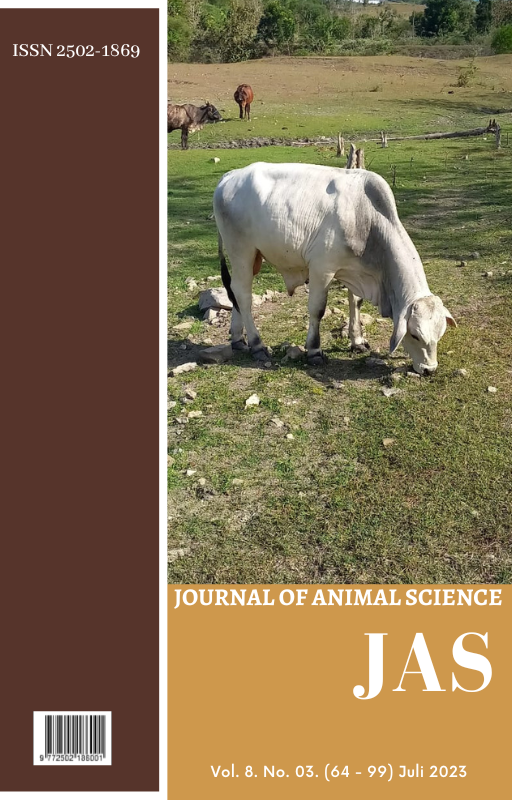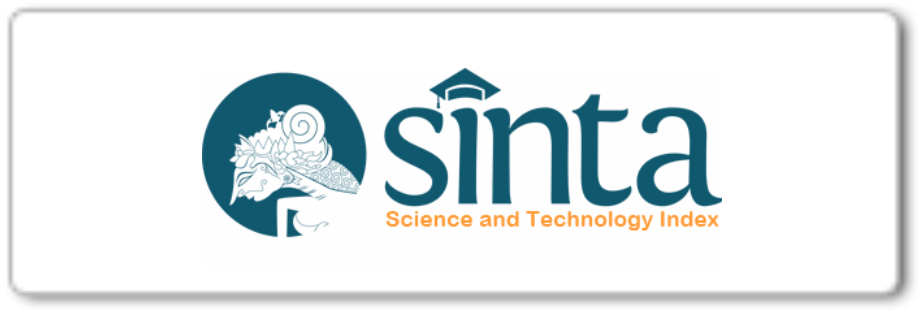Literature Review : Faktor yang Mempengaruhi Tingkat Konsumsi Susu Pada Rumah Tangga Peternak di Negara Berkembang
DOI:
https://doi.org/10.32938/ja.v8i3.4548Keywords:
Rumah Tangga Peternak, Konsumsi Susu, Negara Berkembang, Sosial Ekonomi, NutrisiAbstract
Susu merupakan salah satu sumber gizi yang penting bagi manusia, terutama dalam periode pertumbuhan dan perkembangan. Konsumsi susu yang cukup memberikan nutrisi penting seperti protein, kalsium, vitamin D, dan zat besi yang diperlukan untuk menjaga kesehatan tulang, sistem kekebalan tubuh, dan fungsi tubuh lainnya. Bagi keluarga peternak di negara berkembang, susu juga memiliki peran ekonomi yang signifikan, karena peternakan susu dapat menjadi sumber pendapatan yang stabil. Literature review ini bertujuan untuk mengetahui faktor-faktor yang mempengaruhi tingkat konsumsi susu oleh keluarga peternak di negara-negara berkembang. Penelitian ini merupakan literature review yang dimulai dengan melakukan penelusuran terhadap beberapa literatur yang berhubungan dengan tingkat konsumsi susu pada keluarga peternak di negara berkembang. Artikel diambil dari publisher terpercaya seperti Elsevier, PubMed Central, dan Springer. Penelusuran artikel terkait tingkat konsumsi susu pada keluarga peternak di negara berkembang dicari menggunakan kata kunci yang sesuai dengan topik literatur dan dibatasi dari penelitian 10 tahun terakhir yaitu dari tahun 2013 sampai 2023. Adapun kata kunci yang dipakai dalam pencarian adalah “peternakan susu”, “konsumsi susu”, dan “negara-negara berkembang”. Tingkat konsumsi susu rumah tangga peternak di negara berkembang masih belum memenuhi rekomendasi FAO, dan masih jauh di bawah konsumsi susu rumah tangga peternak di negara maju. Terdapat berbagai faktor yang mempengaruhi tingkat konsumsi susu di kalangan keluarga peternak, diantaranya karakteristik sosial ekonomi, keterjangkauan, aksesibilitas, ketersediaan, perubahan iklim, pendapatan rumah tangga, preferensi budaya, volatilitas harga, kesadaran nutrisi, dan kebijakan pemerintah.References
Ayenew, Y. A., Wurzinger, M., Tegegne, A., & Zollitsch, W. 2009. Handling, processing and marketing of milk in the North western Ethiopian highlands. In Livestock Research for Rural Development (Vol. 21, Issue 7).
Bailey, R. L., West, K. P., & Black, R. E. 2015. The epidemiology of global micronutrient deficiencies. Annals of Nutrition and Metabolism, 66, 22–33.
Black, R. E., Victora, C. G., Walker, S. P., Bhutta, Z. A., Christian, P., De Onis, M., Ezzati, M., Grantham-Mcgregor, S., Katz, J., Martorell, R., & Uauy, R. (2013). Maternal and child undernutrition and overweight in low-income and middle-income countries. The Lancet, 382(9890), 427–451.
Daryanto, A., Sofia, D. A., Sahara, S., & Sinaga, A. R. 2020. Climate Change and Milk Price Volatility in Indonesia. International Journal of Economics and Financial Issues, 10(2), 282–288.
Debesai, M. G. 2020. Factors affecting vulnerability level of farming households to climate change in developing countries: evidence from Eritrea. IOP Conference Series: Materials Science and Engineering, 1001(1), 012093.
Deneke, T. T., Bekele, A., Moore, H. L., Mamo, T., Almaw, G., Mekonnen, G. A., Mihret, A., Tschopp, R., Yeheyis, L., Hodge, C., Wood, J. L. N., Berg, S., Aseffa, A., Tessema, B., Belachew, B., Fekadu, E., Melese, F., Gemechu, G., Taye, H. Zeleke, M. 2022. Milk and meat consumption patterns and the potential risk of zoonotic disease transmission among urban and peri-urban dairy farmers in Ethiopia. In BMC Public Health (Vol. 22, Issue 1).
Dror, D. K., & Allen, L. H. 2014. Dairy product intake in children and adolescents in developed countries: Trends, nutritional contribution, and a review of association with health outcomes. Nutrition Reviews, 72(2), 68–81.
Duguma, B. 2022. Milk composition, traditional processing, marketing, and consumption among smallholder dairy farmers in selected towns of Jimma Zone, Oromia Regional State, Ethiopia. Food Science and Nutrition, 10(9), 2879–2895.
Duressa, D., Yigrem, S., Tola, Y. B., & Tolemariam, T. 2022. East African Journal of Sciences ( 2022 ) Contribution of Dairy Products to Farm Household Nutrition in Addis Ababa and Hawassa- Dilla Milk Sheds in Ethiopia. East African Journal of Science, 16(1), 31–46.
Fekete, Á. A., Givens, D. I., & Lovegrove, J. A. 2013. The impact of milk proteins and peptides on blood pressure and vascular function: A review of evidence from human intervention studies. Nutrition Research Reviews, 26(2), 177–190.
Hernández-Castellano, L. E., Nally, J. E., Lindahl, J., Wanapat, M., Alhidary, I. A., Fangueiro, D., Grace, D., Ratto, M., Bambou, J. C., & de Almeida, A. M. (2019). Dairy science and health in the tropics: challenges and opportunities for the next decades. Tropical Animal Health and Production, 51(5), 1009–1017.
Hoddinott, J., Headey, D., & Dereje, M. 2015. Cows, Missing Milk Markets, and Nutrition in Rural Ethiopia. Journal of Development Studies, 51(8), 958–975.
Kapaj, A. 2018. Factors That Influence Milk Consumption World. In European Journal of Business, Economics and Accountancy (Vol. 6, Issue 2, pp. 14–18).
Paraffin, A. S., Zindove, T. J., & Chimonyo, M. 2018. Household consumption preferences of dairy products and their perceptions of milk safety. Journal of Food Safety, 38(2).
Prasad, R. 2017. Historical Aspects of Milk Consumption in South, Southeast, and East Asia. Asian Agri-History, 21(4), 287–307.
Rahmawati, R., Fauziah, A., Tanziha, I., Hardinsyah, H., & Briawan, D. 2018. Prevalence and Risk Factors of Final Stunting Stunting Events. Window of Health : Jurnal Kesehatan, April, 90–96.
WHO. 2021. Levels and trends in child malnutrition WHO Joint Child Malnutrition Estimates Key findings of the 2021 edition. World Health Organization, 1–32.
Yigrem, S., Beyene, F., Tegegne, A., & Gebremedhin, B. 2008. Dairy production, processing and marketing systems of Shashemene–Dilla area, South Ethiopia. IPMS (Improving Productivity and Market Success) of Ethiopian Farmers Project Working Paper, 9(August 2015).
Downloads
Published
How to Cite
Issue
Section
License
Copyright (c) 2023 Sembodo Nugroho, Farida Farida

This work is licensed under a Creative Commons Attribution-NonCommercial 4.0 International License.
The journal is committed to free-open access that does not charge readers or their institutions for access. Readers are entitled to read, download, copy, distribute, print, search, or link to the full texts of articles, as long as not for commercial purposes. The license type is CC BY-NC 4.0.









.png)
.jpg)

